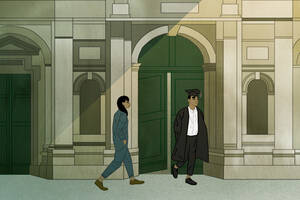Operations Strategy Economics Dec 1, 2007
Are Reservations Recommended?
Offering reservations is costly to restaurants, but they can be beneficial in some cases
If you’re like most people, you have had at least one annoying experience with restaurant reservations that goes something like this: You go to the trouble of making a reservation at a nice restaurant but when you arrive find almost all the tables empty. You could have easily walked in and gotten a table. Why did you bother to make a reservation? The better question, however, might be whether you would have come at all without the reassurance of a reservation. It might be that a restaurant takes reservations not to manage demand on busy nights but to drive more business on slow ones. Recent research conducted by Alexei Alexandrov (University of Rochester and a graduate of the Kellogg School’s Managerial Economics and Strategy doctoral program) and Professor Martin Lariviere of the Managerial Economics and Decision Sciences department sheds light on the microeconomics underlying the effective use of restaurant reservations.
The Nature of Reservations
If you think about it, restaurant reservations are an odd market institution. They are costly for the restaurant to provide. At a minimum, the restaurant must provide staff to answer the phone before the restaurant opens. This may be automated, but middlemen such as OpenTable.com impose both monthly fixed fees as well as per-reservations charges.
There are also no-shows. Unlike other service providers (for example, hotels) most restaurants do not impose charges on customers who fail to honor their reservations. When this happens, a table sits empty and generates no revenue. Not surprisingly, no-show rates can be high and are estimated to range from 10 to 20 percent for typical evenings. Special occasions such as New Year’s Eve or a parents’ weekend in a college town can cause the no-show rate to rise to 40 percent. Restaurants can take some steps to limit these costs, such as calling to confirm reservations or overbooking, but these add more cost or compromise the quality of service. Confirming reservations requires additional labor. Overbooking raises the possibility of a lobby full of would-be diners waiting well past their scheduled reservation times.
Given that restaurants incur costs for providing reservations and many customers value holding reservations, it is curious that restaurants offer reservations for free. The restaurant industry has inadvertently created what may be the most readily available arbitrage opportunity in America. Firms such as PrimeTimeTables.com and withoutreservations.biz have stepped in to take advantage of this opportunity. These firms make reservations at popular restaurants under a fictitious name well in advance and then post their “inventory” of reservations on the Web. The first willing buyer (prices range from $35 to $45) learns the name that gets them a seat.
Why should a restaurant offer reservations? Reservations are not always necessary for success. Consider Frontera Grill, one of Chicago’s best-known restaurants, which Zagat.com ranks as the number two Mexican restaurant in the city and which offers advance reservations only for large parties. Everyone else must endure a long wait. Interestingly, the city’s top Mexican restaurant, Topolobampo, takes reservations (and indeed they are essential for most nights) despite the fact that it shares an owner (celebrity chef Rick Bayless), a building, and a kitchen with Frontera Grill.
Previous service management research did not address the variability of reservation use by restaurants. Most of the work on advanced sales or reservations in services has focused on settings in which the price of the service depends on when customers make reservations. This fits the hotel and car rental industries but not restaurants, which put the same menu in front of both reservations holders and walk-in customers. To understand restaurant reservations, we need an explanation that does not depend upon varying prices to customers.
How Reservations Can Increase Demand
To appreciate how reservations impact a restaurant’s demand consider the problem that potential diners face when reservations are not offered. First, customers face a cost in getting to the restaurant. This may be the cost of a cab ride across town or the hassle of lining up a babysitter. Second, customers likely incur an additional cost if they arrive at a crowded dining room and have no hope of getting a seat. (Imagine the chagrin of taking your date to a fast-food joint because you could not squeeze into a fancy restaurant.) So what are customers to do? Obviously, whether or not they walk in depends on how highly they value dining at the restaurant and their perceived chances of getting a seat. The lower the chance of getting a seat, the higher the valuation they must have to be willing to walk in.
From the restaurant’s point of view, this means that only a fraction of potential customers (i.e., only some of those whose value for dining out would cover the cost of getting to the restaurant) actually come into the restaurant. The restaurant may be fine with this if its dining room is full every night, but if the number of diners varies over time, some nights will be busy and others will be slow—maybe really, really slow. If customers cannot verify just how busy the restaurant will be, those with relatively low values for dining out will stay home even on slow nights when they could easily get a seat.
Reservations solve this problem. By guaranteeing customers a seat, restaurants eliminate the risk patrons face, resulting in more traffic on slow nights. Thus, reservations remain valuable to the restaurateur on slow nights when customers are scratching their heads wondering why they bothered. If the night was going to be busy anyway, restaurateurs may wish they had not offered reservations since they are unnecessary to increase business and result in no-shows. However, when the dining room is only partly full, they realize that some customers came in only because they were able to get reservations.
When Are Reservations Recommended?
A number of parameters determine just how valuable reservations can be in driving demand. One is the restaurant’s capacity. Limited capacity makes reservations more attractive because it increases competition for seats and limits patrons’ willingness to walk in. Greater uncertainty in the number of customers who might be in the market has a similar impact. Reservations make little difference when the restaurant is almost certain to be busy or there is not much difference between the number of customers in the market on busy and slow nights. They can increase slow-night sales when customers do not know how crowded the restaurant will be.
Another important factor is the no-show rate. Reservations by definition are given out before customers will need service. When a customer requests a reservation on Monday, he does not know how tired he will be after work on Friday or whether the baby sitter will get sick. Hence, there is some chance that reservations holders will fail to show up. The higher the no-show rate, the less attractive reservations are. However, the greater the cost to diners of not getting a seat, the more attractive offering reservations becomes to the restaurateur. If a restaurant wants to target couples going out for their anniversaries, offering reservations may be essential.
Finally, competition matters. Competitive markets are more likely to have restaurants that offer reservations because they allow restaurants to steal some market share from competitors. Indeed, customers might settle for their “second choice” restaurant because they cannot get reservations at their first choice. However, if there are enough restaurants in the market, some might be better off not offering reservations at all. When many offer reservations, some restaurants prefer to avoid fighting for customers on slow nights so they can avoid no-shows on busy nights.
Other Benefits to Reservations
There are other reasons why a restaurant may offer reservations. For example, if there are multiple market segments that differ in their costs, reservations can shift the mix of customers the restaurant serves. For example, reservations may allow a downtown restaurant to attract more big spenders from the suburbs. Reservations may also serve to move some customers from busy peak periods to slower off-peak periods. All customers may want to eat between 6:30 p.m. and 8:00 p.m. but some may shift to 6:00 or 8:30 if they are guaranteed a seat, effectively allowing the restaurant to serve more parties per evening. Geja’s Café in Chicago, for example, explicitly states on its Web site that reservations on Friday and Saturday nights are only available at limited, relatively early times.
There are also explicit operational considerations. For example, reservations may help the restaurant estimate demand and thus improve staffing and sourcing. This is particularly important when the restaurant has high marginal costs. Alinea, one of Chicago’s best restaurants, is known for intricate, multi-course menus. It requires reservations. To the extent that Alinea incurs significant expense in preparing for its guests, knowing how many are coming on a given night is crucial. Reservations also help manage workflow. By staggering seatings and not filling all tables at the same time, a restaurant’s management can insure that waiters are not overwhelmed by all customers arriving at once and in turn swamping the bartender with cocktail orders and burying the kitchen with food requests. Instead, reservations can match the flow of customers with the system’s capacity and allow the restaurant to provide faster service to customers without having to maintain excessive capacity. Thus, while reservations are costly, they may ultimately lead to lower cost in serving customers.
Conclusion
Although reservations are of primary interest for the restaurant industry, these insights can be extended to other service businesses such as bowling alleys and barbershops that serve both walk-in customers and those that plan ahead. For any such business, reservations have the potential to increase demand in slack markets by limiting customer risk. A guaranteed seat brings in more customers and increases revenue. Considering the additional operational advantages of allowing reservations, it is not surprising that restaurants and other service-based businesses offer reservations without getting paid for them.
Alexandrov, Alexei and Martin Lariviere. 2012. Are Reservations Recommended? Manufacturing & Service Operations Management, Spring, 14(2): 218-230.


